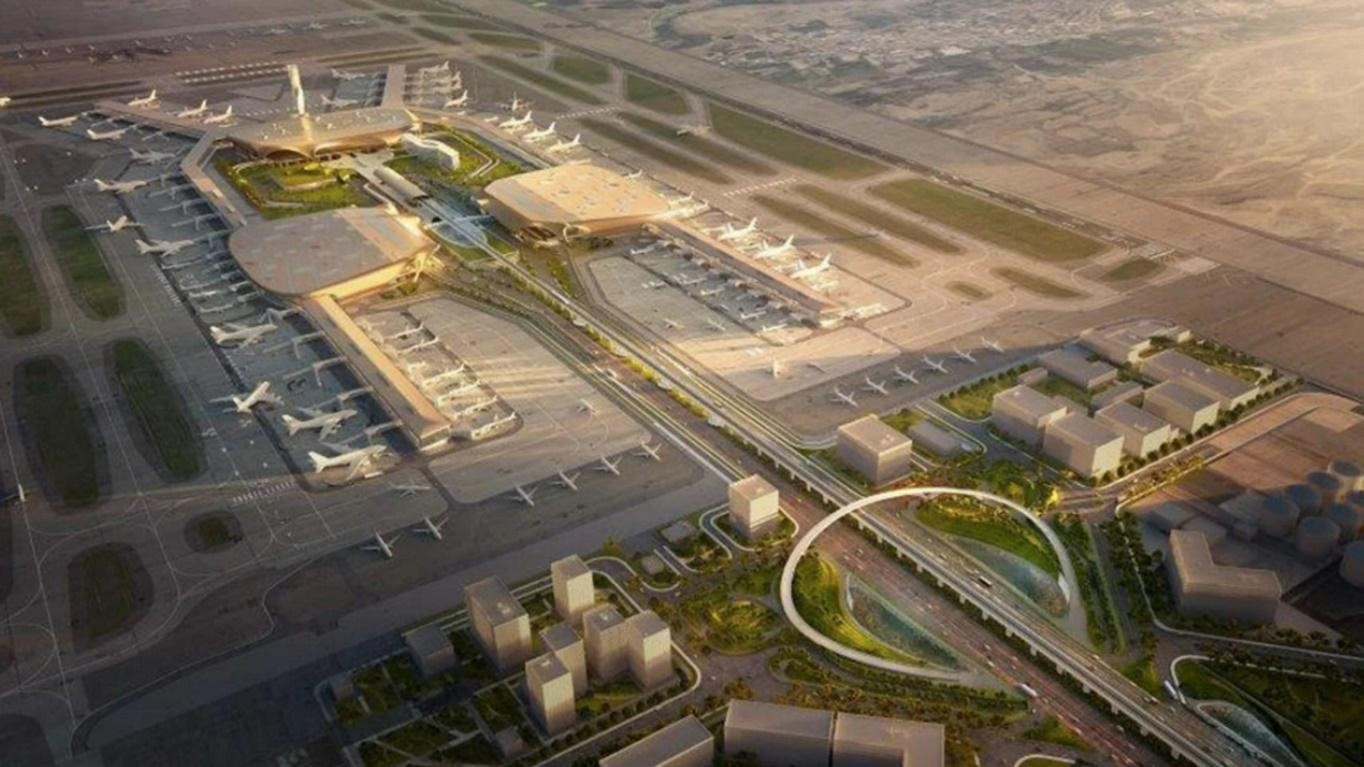Navi Mumbai, the satellite city adjacent to Mumbai, has long been awaiting its grand aviation gateway — the Navi Mumbai International Airport (NMIA). Touted to be one of the largest greenfield airport developments in India, this project is expected to redefine not only air travel in western India but also boost economic growth and infrastructure development in the region. With delays, controversies, and landmark milestones shaping its journey, the airport has now entered its final phases of construction, raising anticipation among citizens and investors alike.
In this detailed guide, we’ll cover everything you need to know about Navi Mumbai International Airport — from its opening date and design to facts, location details, and the latest status update. We’ll also take you through some interesting tidbits, including the airport’s official name, code, and more.
Introduction: Why Navi Mumbai Needs an International Airport
Mumbai’s existing Chhatrapati Shivaji Maharaj International Airport (CSMIA) has been operating beyond its capacity for years, handling over 50 million passengers annually even though it was designed for far fewer. The congested runways and limited expansion options in the heart of Mumbai city made it imperative to plan a second airport.
Enter the International Airport Navi Mumbai — a project that promises to decongest Mumbai’s air traffic, handle up to 90 million passengers per year in phases, and act as a key aviation hub between South Asia and the Middle East. Moreover, its location in Navi Mumbai makes it strategically important, as it connects well to upcoming economic zones, the Mumbai Trans Harbour Link (MTHL), and major residential corridors.
Navi Mumbai International Airport Opening Date: When Will It Be Operational?

The question on everyone’s mind: What is the Navi Mumbai International Airport opening date?
As per the latest official reports and statements made in early 2025, the first phase of Navi Mumbai International Airport is set to be operational by March 2025. This phase will see the completion of one runway and one terminal, capable of handling 20 million passengers annually. Full-scale operations with multiple runways and terminals are projected to be completed by 2032.
Keep in mind that this timeline has seen multiple delays — the airport was initially scheduled for completion by 2019. However, land acquisition issues, environmental concerns, and the pandemic pushed the project back.
Navi Mumbai International Airport Name: Official Identity Revealed

Officially, the airport will be named DB Patil International Airport Navi Mumbai, in honor of the late DB Patil, a leader who fought for the rights of project-affected people in Navi Mumbai.
Though popularly referred to as Navi Mumbai International Airport (NMIA), the official name adds a touch of local sentiment and history to this modern infrastructure marvel.
Navi Mumbai International Airport Location and Address

The airport’s location has been carefully chosen for its strategic advantage.
- Navi Mumbai International Airport location: Ulwe, Raigad district, Navi Mumbai, Maharashtra, India.
- Navi Mumbai International Airport address: Near Ulwe node, Navi Mumbai, Maharashtra 410206.
It is situated about 35 km from Mumbai’s current international airport and approximately 50 km from South Mumbai. The airport is also well connected to the upcoming Mumbai Trans Harbour Link (MTHL), suburban railway lines, and proposed Metro corridors.
Navi Mumbai International Airport Map: Understanding the Layout

If you’re looking up Navi Mumbai International Airport photos or maps, you’ll notice that the design spreads over 1,160 hectares (about 2,867 acres). The airport map features:
- Two parallel runways
- An X-shaped terminal design
- Cargo terminals
- Aircraft maintenance zones
- Metro and suburban rail connectivity stations
- A dedicated green buffer zone to reduce environmental impact
The airport’s proximity to the Panvel creek and mangroves added complexity to its planning, but extensive land reclamation and environmental safeguards have now shaped a robust layout.
Navi Mumbai International Airport Design: A Blend of Modernity & Sustainability

The Navi Mumbai International Airport design is nothing short of iconic. Conceived by renowned design firm Zaha Hadid Architects, the structure promises to set new benchmarks in airport architecture.
Key highlights include:
- X-shaped terminal: This unique shape ensures seamless passenger flow and short walking distances.
- Eco-friendly features: Rainwater harvesting, solar energy systems, and green landscaping to minimize carbon footprint.
- Runways: Two runways spaced for independent simultaneous operations.
- Luxury lounges: High-end shopping areas and hospitality services.
- Multi-modal connectivity: Integration with road, rail, and metro systems.
The terminal’s roof structure takes inspiration from traditional Indian pavilions, lending a cultural flavor to its futuristic appeal.
Navi Mumbai International Airport Status: Latest 2025 Update
As of 2025, the Navi Mumbai International Airport status is progressing steadily towards the completion of Phase 1. Recent milestones include:
- 95% completion of runway 1
- 80% structural completion of Terminal 1
- Installation of ATC towers underway
- Operational readiness trials scheduled for late 2024
The airport’s private operator, Navi Mumbai International Airport Private Limited (NMIAL) — a joint venture led by Adani Airports Holdings Limited — is spearheading construction and operational readiness activities. NMIAL holds the concession for 30 years, extendable by another 30.
DB Patil International Airport Navi Mumbai: Economic & Social Impact
Beyond air travel, the DB Patil International Airport Navi Mumbai is expected to have wide-ranging benefits:
- Creation of over 2 lakh jobs during construction and operational phases
- Boosting tourism in Maharashtra
- Enhancing property values in surrounding nodes like Ulwe, Panvel, and Dronagiri
- Serving as a catalyst for Navi Mumbai’s emergence as an economic hub
The airport will also stimulate real estate, logistics, and hospitality sectors in Navi Mumbai and beyond.
Navi Mumbai International Airport Code: Official Airport Identifier
For travelers and aviation enthusiasts, the airport’s three-letter code is key. The Navi Mumbai International Airport code has been proposed as NMI, though formal confirmation by IATA (International Air Transport Association) is expected closer to the opening date.
This code will soon appear on flight tickets, baggage tags, and airline systems worldwide.
Interesting Facts About Navi Mumbai Airport
Here are some intriguing nuggets about NMIA:
- It’s one of the few airports globally designed with an X-shaped terminal.
- The site involved the rehabilitation of over 3,500 families — one of the largest resettlement exercises in Indian infrastructure history.
- Environmental clearance was a long-drawn battle due to the airport’s location near mangroves and rivers.
- NMIA will be India’s first fully digital and paperless airport from Day 1.
- The cargo terminal will eventually handle 1 million tonnes of freight annually.
Conclusion:
The Navi Mumbai International Airport is more than just an aviation hub — it symbolizes Navi Mumbai’s transformation into a global city. With its modern design, sustainability features, and world-class amenities, the airport is poised to change how Mumbaikars and the wider region travel, live, and do business.
For homebuyers and investors, this mega infrastructure project will enhance property values and open up new corridors of growth. Areas like Ulwe, Panvel, Dronagiri, and even Taloja will see the ripple effects of this development in terms of connectivity and real estate appreciation.
At Housiey, we’ve already observed increased interest in properties close to the airport site, especially from NRI buyers and investors looking at the long-term picture. If you’re considering a home or investment in Navi Mumbai, now might be the time to explore your options.
Don’t miss our detailed blog on the Navi Mumbai Airport: Terminal 1, 2 & 3 | Domestic & International
FAQs
Navi Mumbai, the satellite city adjacent to Mumbai, has long been awaiting its grand aviation gateway — the Navi Mumbai International Airport (NMIA). Touted to be one of the largest greenfield airport developments in India, this project is expected to redefine not only air travel in western India but also boost economic growth and infrastructure development in the region. With delays, controversies, and landmark milestones shaping its journey, the airport has now entered its final phases of construction, raising anticipation among citizens and investors alike.
In this detailed guide, we’ll cover everything you need to know about Navi Mumbai International Airport — from its opening date and design to facts, location details, and the latest status update. We’ll also take you through some interesting tidbits, including the airport’s official name, code, and more.
Introduction: Why Navi Mumbai Needs an International Airport
Mumbai’s existing Chhatrapati Shivaji Maharaj International Airport (CSMIA) has been operating beyond its capacity for years, handling over 50 million passengers annually even though it was designed for far fewer. The congested runways and limited expansion options in the heart of Mumbai city made it imperative to plan a second airport.
Enter the International Airport Navi Mumbai — a project that promises to decongest Mumbai’s air traffic, handle up to 90 million passengers per year in phases, and act as a key aviation hub between South Asia and the Middle East. Moreover, its location in Navi Mumbai makes it strategically important, as it connects well to upcoming economic zones, the Mumbai Trans Harbour Link (MTHL), and major residential corridors.
Navi Mumbai International Airport Opening Date: When Will It Be Operational?

The question on everyone’s mind: What is the Navi Mumbai International Airport opening date?
As per the latest official reports and statements made in early 2025, the first phase of Navi Mumbai International Airport is set to be operational by March 2025. This phase will see the completion of one runway and one terminal, capable of handling 20 million passengers annually. Full-scale operations with multiple runways and terminals are projected to be completed by 2032.
Keep in mind that this timeline has seen multiple delays — the airport was initially scheduled for completion by 2019. However, land acquisition issues, environmental concerns, and the pandemic pushed the project back.
Navi Mumbai International Airport Name: Official Identity Revealed

Officially, the airport will be named DB Patil International Airport Navi Mumbai, in honor of the late DB Patil, a leader who fought for the rights of project-affected people in Navi Mumbai.
Though popularly referred to as Navi Mumbai International Airport (NMIA), the official name adds a touch of local sentiment and history to this modern infrastructure marvel.
Navi Mumbai International Airport Location and Address

The airport’s location has been carefully chosen for its strategic advantage.
- Navi Mumbai International Airport location: Ulwe, Raigad district, Navi Mumbai, Maharashtra, India.
- Navi Mumbai International Airport address: Near Ulwe node, Navi Mumbai, Maharashtra 410206.
It is situated about 35 km from Mumbai’s current international airport and approximately 50 km from South Mumbai. The airport is also well connected to the upcoming Mumbai Trans Harbour Link (MTHL), suburban railway lines, and proposed Metro corridors.
Navi Mumbai International Airport Map: Understanding the Layout

If you’re looking up Navi Mumbai International Airport photos or maps, you’ll notice that the design spreads over 1,160 hectares (about 2,867 acres). The airport map features:
- Two parallel runways
- An X-shaped terminal design
- Cargo terminals
- Aircraft maintenance zones
- Metro and suburban rail connectivity stations
- A dedicated green buffer zone to reduce environmental impact
The airport’s proximity to the Panvel creek and mangroves added complexity to its planning, but extensive land reclamation and environmental safeguards have now shaped a robust layout.
Navi Mumbai International Airport Design: A Blend of Modernity & Sustainability

The Navi Mumbai International Airport design is nothing short of iconic. Conceived by renowned design firm Zaha Hadid Architects, the structure promises to set new benchmarks in airport architecture.
Key highlights include:
- X-shaped terminal: This unique shape ensures seamless passenger flow and short walking distances.
- Eco-friendly features: Rainwater harvesting, solar energy systems, and green landscaping to minimize carbon footprint.
- Runways: Two runways spaced for independent simultaneous operations.
- Luxury lounges: High-end shopping areas and hospitality services.
- Multi-modal connectivity: Integration with road, rail, and metro systems.
The terminal’s roof structure takes inspiration from traditional Indian pavilions, lending a cultural flavor to its futuristic appeal.
Navi Mumbai International Airport Status: Latest 2025 Update
As of 2025, the Navi Mumbai International Airport status is progressing steadily towards the completion of Phase 1. Recent milestones include:
- 95% completion of runway 1
- 80% structural completion of Terminal 1
- Installation of ATC towers underway
- Operational readiness trials scheduled for late 2024
The airport’s private operator, Navi Mumbai International Airport Private Limited (NMIAL) — a joint venture led by Adani Airports Holdings Limited — is spearheading construction and operational readiness activities. NMIAL holds the concession for 30 years, extendable by another 30.
DB Patil International Airport Navi Mumbai: Economic & Social Impact
Beyond air travel, the DB Patil International Airport Navi Mumbai is expected to have wide-ranging benefits:
- Creation of over 2 lakh jobs during construction and operational phases
- Boosting tourism in Maharashtra
- Enhancing property values in surrounding nodes like Ulwe, Panvel, and Dronagiri
- Serving as a catalyst for Navi Mumbai’s emergence as an economic hub
The airport will also stimulate real estate, logistics, and hospitality sectors in Navi Mumbai and beyond.
Navi Mumbai International Airport Code: Official Airport Identifier
For travelers and aviation enthusiasts, the airport’s three-letter code is key. The Navi Mumbai International Airport code has been proposed as NMI, though formal confirmation by IATA (International Air Transport Association) is expected closer to the opening date.
This code will soon appear on flight tickets, baggage tags, and airline systems worldwide.
Interesting Facts About Navi Mumbai Airport
Here are some intriguing nuggets about NMIA:
- It’s one of the few airports globally designed with an X-shaped terminal.
- The site involved the rehabilitation of over 3,500 families — one of the largest resettlement exercises in Indian infrastructure history.
- Environmental clearance was a long-drawn battle due to the airport’s location near mangroves and rivers.
- NMIA will be India’s first fully digital and paperless airport from Day 1.
- The cargo terminal will eventually handle 1 million tonnes of freight annually.
Conclusion:
The Navi Mumbai International Airport is more than just an aviation hub — it symbolizes Navi Mumbai’s transformation into a global city. With its modern design, sustainability features, and world-class amenities, the airport is poised to change how Mumbaikars and the wider region travel, live, and do business.
For homebuyers and investors, this mega infrastructure project will enhance property values and open up new corridors of growth. Areas like Ulwe, Panvel, Dronagiri, and even Taloja will see the ripple effects of this development in terms of connectivity and real estate appreciation.
At Housiey, we’ve already observed increased interest in properties close to the airport site, especially from NRI buyers and investors looking at the long-term picture. If you’re considering a home or investment in Navi Mumbai, now might be the time to explore your options.
Don’t miss our detailed blog on the Navi Mumbai Airport: Terminal 1, 2 & 3 | Domestic & International
FAQs











